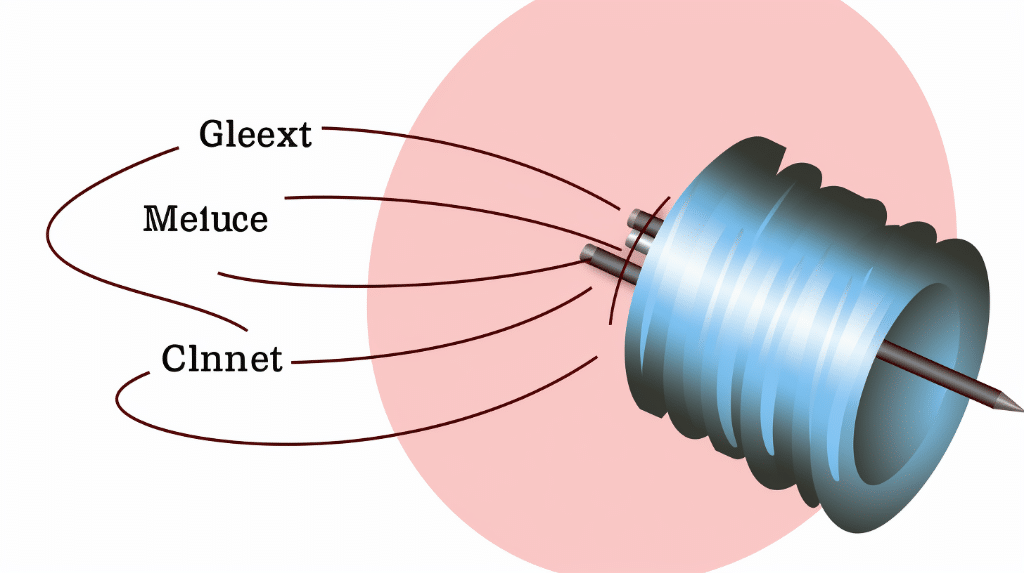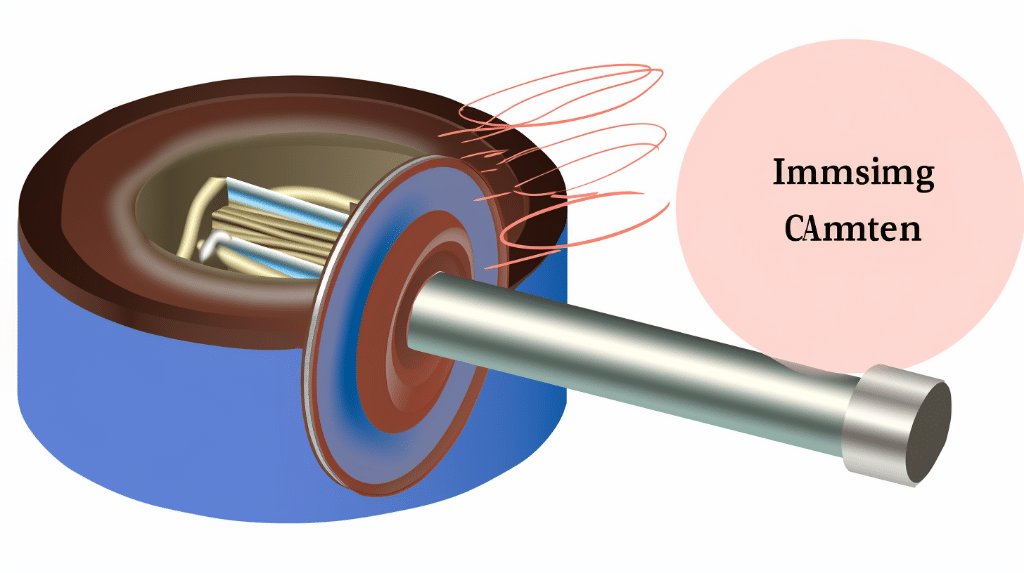How to Increase the Strength of a Magnetic Field
Magnetic fields play a crucial role in many aspects of our lives, from the operation of electric motors to the functionality of MRI machines. Understanding how to increase the strength of a magnetic field can be valuable knowledge, whether you are an enthusiast experimenting with magnets or a scientist conducting advanced research. In this blog post, we will delve into the basics of magnetic fields, explore the factors influencing their strength, and discuss practical ways to amplify their power. So let’s get started!
Understanding the Basics of Magnetic Fields

Before we dive into increasing the strength of a magnetic field, it is essential to grasp the fundamentals. A magnetic field is a region in space where a magnetic force can be detected. It is generated by moving electric charges, typically electrons. Magnetic fields are represented by magnetic field lines, which indicate the direction and strength of the field.
Factors Influencing the Strength of a Magnetic Field

Several factors influence the strength of a magnetic field. Understanding these factors is crucial to increasing the field’s intensity effectively.
-
Current: The amount of electric current flowing through a conductor is directly proportional to the strength of the magnetic field it produces. A higher current will result in a stronger magnetic field, while a lower current will produce a weaker field. This relationship is described by Ampere’s Law.
-
Coil Turns: The number of turns in a coil of wire also affects the strength of a magnetic field. Increasing the number of turns increases the magnetic field strength proportionally. This relationship is known as Faraday’s Law.
-
Magnetic Material: Using a magnetic material, such as iron or neodymium, can significantly enhance the strength of a magnetic field. These materials have high magnetic permeability, meaning they can efficiently concentrate and amplify magnetic field lines.
Practical Ways to Increase Magnetic Field Strength
Now that we have a good understanding of the factors influencing magnetic field strength, let’s explore some practical ways to increase it.
-
Increasing the Current: To increase the strength of a magnetic field, you can increase the current flowing through a conductor. This can be achieved by using a higher voltage power supply or by reducing the resistance of the circuit. However, it is crucial to ensure that the conductor and power supply can handle the increased current without overheating or damaging the equipment.
-
Adding Coils: Adding more turns to a coil of wire can significantly boost the magnetic field strength. For example, wrapping a wire around an iron core multiple times will increase the number of coil turns and consequently increase the magnetic field intensity.
-
Using Magnetic Materials: As mentioned earlier, using magnetic materials can greatly enhance the strength of a magnetic field. Placing a magnetic material, such as iron or a neodymium magnet, near the source of the magnetic field will concentrate and amplify the field lines. This technique is commonly used in applications like magnetic separators and speakers.
-
Optimizing the Geometry: The shape and arrangement of the magnetic field source can also impact its strength. For example, using a solenoid (a cylindrical coil of wire) can create a more uniform and concentrated magnetic field compared to a simple straight wire.
Changing the Strength of a Magnetic Field
Now that we have explored practical ways to increase the strength of a magnetic field let’s discuss how we can alter the field’s strength by manipulating certain factors.
The Role of Current in Magnetic Field Strength
To understand the relationship between current and magnetic field strength, we can turn to Ampere’s Law. Ampere’s Law states that the magnetic field strength around a current-carrying conductor is directly proportional to the current flowing through it. Mathematically, this relationship is expressed as:
![]()
Where:
– ![]() is the magnetic field strength
is the magnetic field strength
– ![]() is the permeability of free space (a constant)
is the permeability of free space (a constant)
– ![]() is the current flowing through the conductor
is the current flowing through the conductor
– ![]() is the number of turns in the coil
is the number of turns in the coil
– ![]() is the length of the conductor
is the length of the conductor
From this equation, we can see that increasing the current ![]() ) or the number of coil turns
) or the number of coil turns ![]() ) will directly increase the magnetic field strength
) will directly increase the magnetic field strength ![]() ).
).
The Impact of Coil Turns on Magnetic Field Strength
Expanding on the concept of coil turns, let’s take a deeper look at Faraday’s Law. Faraday’s Law states that the magnetic field strength is directly proportional to the number of turns in a coil of wire. Mathematically, we can express this relationship as:
![]()
Where all the variables have the same meaning as in Ampere’s Law.
This equation demonstrates that increasing the number of coil turns ![]() ) will directly increase the magnetic field strength
) will directly increase the magnetic field strength ![]() ). Therefore, adding more turns to a coil is an effective way to boost the magnetic field intensity.
). Therefore, adding more turns to a coil is an effective way to boost the magnetic field intensity.
Experiment: Altering Current and Coil Turns to Change Magnetic Field Strength
To solidify our understanding, let’s conduct a simple experiment. We will use a solenoid (a coil of wire) connected to a power supply.
- Set up a solenoid by coiling a wire around a cylindrical tube.
- Connect the solenoid to a power supply.
- Measure the current flowing through the solenoid using an ammeter.
- Use a magnetic field strength measuring device, such as a Hall probe, to measure the magnetic field strength at different current values.
- Record the readings and observe how the magnetic field strength changes as the current increases.
- Repeat the experiment, this time keeping the current constant and varying the number of coil turns.
- Measure the magnetic field strength at different coil turn values and observe the changes.
By altering the current and coil turns, you will observe firsthand how these factors directly impact the strength of a magnetic field.
Increasing the Strength of a Magnet

In addition to manipulating the magnetic field generated by a current-carrying conductor, we can also increase the strength of a magnet itself. This can be accomplished through various techniques that optimize the magnet’s properties.
The Science Behind Magnet Strength
To understand how to enhance magnet strength, we need to explore the science behind it. Magnets consist of aligned magnetic domains, which are microscopic regions where atomic dipoles align in a specific direction. When these domains are properly aligned, the magnet exhibits a strong magnetic field.
Techniques for Enhancing Magnet Strength
Here are some techniques you can use to increase the strength of a magnet:
-
Magnetic Field Alignment: Exposing a magnet to a strong external magnetic field and then slowly reducing the field can help realign the magnetic domains within the magnet, resulting in increased strength.
-
Heat Treatment: Subjecting a magnet to high temperatures can temporarily disrupt the alignment of the magnetic domains. Upon cooling, the domains can reorient themselves in a more favorable arrangement, potentially increasing the magnet’s strength.
-
Using Stronger Magnetic Materials: Choosing magnets made from materials with higher magnetic properties, such as neodymium magnets, can significantly boost their strength. These materials have larger magnetic moments per atom, leading to stronger magnetic fields.
Experiment: Testing the Strength of Enhanced Magnets
To see the effects of these techniques, you can conduct a simple experiment:
- Start with a regular magnet and measure its strength using a magnetic field strength measuring device.
- Expose the magnet to a strong external magnetic field (e.g., by using another powerful magnet) for a period of time.
- Slowly reduce the external magnetic field and measure the magnet’s strength again.
- Alternatively, subject the magnet to heat by placing it in an oven or heating it with a flame. Be cautious when handling hot objects.
- Allow the magnet to cool down, and measure its strength once more.
- Compare the magnetic field strength before and after applying these techniques to observe any changes.
By conducting this experiment, you will gain insight into how these techniques can enhance the strength of magnets.
Strengthening the Magnetic Field of a Solenoid
A solenoid is a coil of wire wound in a helical shape. It can produce a magnetic field when an electric current flows through it. By understanding the relationship between a solenoid and magnetic field strength, we can explore ways to increase the field’s intensity.
Understanding the Function of a Solenoid
A solenoid is designed to generate a magnetic field that is concentrated within its coil. Its magnetic field strength is determined by factors such as the number of coil turns, the current flowing through the coil, and the length of the solenoid.
The Relationship Between Solenoid and Magnetic Field Strength
The magnetic field strength ![]() ) produced by a solenoid can be calculated using the following equation:
) produced by a solenoid can be calculated using the following equation:
![]()
Where:
– ![]() is the magnetic field strength
is the magnetic field strength
– ![]() is the permeability of free space
is the permeability of free space
– ![]() is the number of coil turns in the solenoid
is the number of coil turns in the solenoid
– ![]() is the current flowing through the solenoid
is the current flowing through the solenoid
From this equation, we can conclude that increasing the number of coil turns ![]() ) or the current
) or the current ![]() ) will directly increase the magnetic field strength
) will directly increase the magnetic field strength ![]() ).
).
Experiment: Increasing the Magnetic Field Strength of a Solenoid
To visualize the impact of these factors, let’s perform an experiment:
- Set up a solenoid by wrapping a wire around a cylindrical tube.
- Connect the solenoid to a power supply and ammeter to measure the current.
- Use a magnetic field strength measuring device to measure the magnetic field strength at different current values.
- Record the readings and observe how the field strength changes as the current increases.
- Repeat the experiment, this time keeping the current constant and varying the number of coil turns.
- Measure the magnetic field strength at different coil turn values and observe the changes.
By conducting this experiment, you will gain a practical understanding of how alterations in current and coil turns impact the magnetic field strength of a solenoid.
Boosting the Magnetic Strength of an Electromagnet
An electromagnet is a type of magnet that produces a magnetic field when an electric current passes through it. By exploring the basics of electromagnetism and understanding the factors that influence an electromagnet’s strength, we can learn how to build a more powerful electromagnet.
The Basics of Electromagnetism
Electromagnetism is the phenomenon where electricity and magnetism are interconnected. When an electric current flows through a conductor, it generates a magnetic field around the conductor. This magnetic field can be enhanced by optimizing certain factors.
Factors that Increase the Strength of an Electromagnet
There are several ways to increase the strength of an electromagnet:
-
Increasing the Current: As we have discussed earlier, the strength of an electromagnet is directly proportional to the current flowing through it. By increasing the current, we can amplify the magnetic field produced by the electromagnet.
-
Using a Magnetic Core: Similar to enhancing the strength of a regular magnet, using a magnetic core, such as iron, can significantly increase the strength of an electromagnet. The magnetic core concentrates the magnetic field lines, resulting in a more powerful electromagnet.
-
Optimizing Coil Turns: Adding more turns to the coil of wire wrapped around the electromagnet can further boost its strength. Increasing the number of turns increases the magnetic field intensity, making the electromagnet more potent.
Experiment: Building a Stronger Electromagnet
Let’s put the theory into practice and conduct an experiment to build a stronger electromagnet:
- Wrap a wire around a magnetic core, such as an iron nail or a piece of iron rod.
- Connect the wire to a power supply and ammeter to measure the current flowing through the electromagnet.
- Use a magnetic field strength measuring device to measure the magnetic field strength at different current values.
- Record the readings and observe how the field strength changes as the current increases.
- Repeat the experiment, this time keeping the current constant and varying the number of coil turns.
- Measure the magnetic field strength at different coil turn values and observe the changes.
By performing this experiment, you will gain a hands-on experience of how current, magnetic cores, and coil turns influence the strength of an electromagnet.
Practical Applications of Increased Magnetic Field Strength
Understanding how to increase the strength of a magnetic field has various practical applications. Let’s take a moment to highlight a few:
-
Electric Motors: Electric motors rely on magnetic fields to generate motion. By increasing the strength of the magnetic field, we can improve the efficiency and performance of electric motors.
-
MRI Machines: Magnetic resonance imaging (MRI) machines use powerful magnetic fields to create detailed images of the human body. Increasing the strength of the magnetic field in an MRI machine can enhance image quality and provide more accurate diagnoses.
-
Speakers and Headphones: Speakers and headphones utilize magnets to convert electrical signals into sound. By amplifying the magnetic field strength, we can achieve louder and more immersive audio experiences.
-
Magnetic Separators: Magnetic separators are used in various industries to separate magnetic materials from non-magnetic ones. Increasing the strength of the magnetic field in these separators improves their efficiency in separating and purifying materials.
Encouragement for Further Exploration and Experimentation
Congratulations! You now have a solid understanding of how to increase the strength of a magnetic field. By exploring the basics, understanding the factors that influence magnetic field strength, and experimenting with different techniques, you can continue to expand your knowledge and delve deeper into the fascinating world of magnetism. So keep exploring, experimenting, and uncovering the endless possibilities that magnetism has to offer!
How can increasing the strength of a magnetic field affect the understanding of magnetic flux and field?
Increasing the strength of a magnetic field can have a significant impact on our understanding of magnetic flux and field. Magnetic flux and magnetic field are closely related concepts in electromagnetism. By increasing the strength of a magnetic field, we can observe changes in the magnetic flux passing through a given area. This understanding of the relationship between magnetic flux and magnetic field can be further explored in the article on “Understanding Magnetic Flux and Field”. The article delves into the intricacies of these concepts and provides valuable insights into their connection.
Numerical Problems on how to Increase Strength of a Magnetic Field
Problem 1
A solenoid consists of 200 turns per meter and carries a current of 2A. The length of the solenoid is 0.5m. Calculate the magnetic field strength inside the solenoid.
Solution:
Given:
Number of turns per meter, ![]()
Current, ![]()
Length of the solenoid, ![]()
The magnetic field strength inside a solenoid can be calculated using the formula:
![]()
where
![]() is the permeability of free space
is the permeability of free space ![]() ).
).
Substituting the given values into the formula:
![]()
Simplifying the expression:
![]()
Therefore, the magnetic field strength inside the solenoid is ![]() .
.
Problem 2
A circular loop of wire with radius 0.1m carries a current of 5A. Calculate the magnetic field strength at the center of the loop.
Solution:
Given:
Radius of the loop, ![]()
Current, ![]()
The magnetic field strength at the center of a circular loop can be calculated using the formula:
![]()
where
![]() is the permeability of free space
is the permeability of free space ![]() ).
).
Substituting the given values into the formula:
![]()
Simplifying the expression:
![]()
Therefore, the magnetic field strength at the center of the loop is ![]() .
.
Problem 3
A current-carrying wire produces a magnetic field of strength 2 x ![]() T at a distance of 0.02m from the wire. Calculate the current flowing in the wire.
T at a distance of 0.02m from the wire. Calculate the current flowing in the wire.
Solution:
Given:
Magnetic field strength, ![]()
Distance from the wire, ![]()
The magnetic field strength around a current-carrying wire can be calculated using the formula:
![]()
where
![]() is the permeability of free space
is the permeability of free space ![]() ).
).
Rearranging the formula to solve for the current ![]() :
:
![]()
Substituting the given values into the formula:
![]()
Simplifying the expression:
![]()
Therefore, the current flowing in the wire is ![]() .
.
Also Read:
- Magnetic field lines of earth
- How to find magnetic field from electric field
- Is palladium magnetic
- Is meteorites magnetic
- Is ink magnetic
- Does earth have magnetic field
- Is pewter magnetic
- Is platinum magnetic
- Is magnetic flux constant
- Is krypton magnetic

The lambdageeksScience Core SME Team is a group of experienced subject matter experts from diverse scientific and technical fields including Physics, Chemistry, Technology,Electronics & Electrical Engineering, Automotive, Mechanical Engineering. Our team collaborates to create high-quality, well-researched articles on a wide range of science and technology topics for the lambdageeks.com website.
All Our Senior SME are having more than 7 Years of experience in the respective fields . They are either Working Industry Professionals or assocaited With different Universities. Refer Our Authors Page to get to know About our Core SMEs.